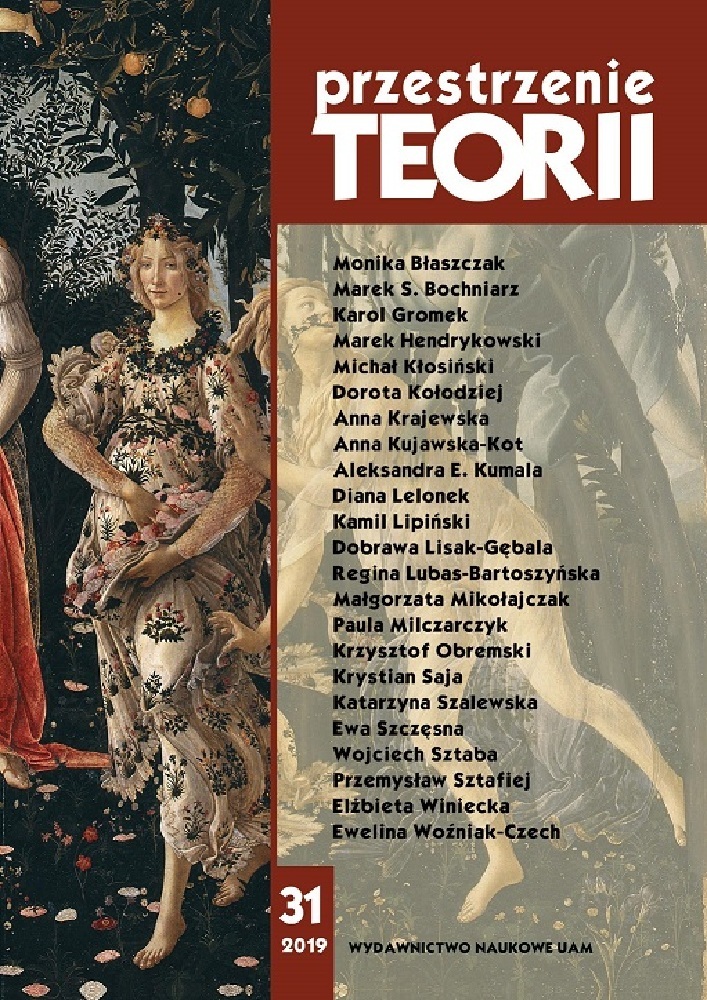Abstrakt
Recently the topic of transnationalism in the arts has become a popular strand of academic research. Nevertheless, this phenomenon is not an entirely new concept. In cinema it has been a constant element since its inception. One of the most important inspirations for world cinema has been the traditional cinematography of the USA, especially from the period of the great film studios, with the western being one of the most popular and imitated genres. Although it seems to be inextricably connected with the American myth of the frontier, the Wild West, the theme of expansion, and the conflict of ‘civilization’ and ‘wildness/savagery’ has reverberated outside the USA. In Japan westerns resonated on both the consumer-commercial and artistic levels. Japanese filmmakers utilized elements of the genre while weaving in some native contexts. The history of colonization of the northern island of Hokkaidō and its native inhabitants – the Ainu people – have been a point of reference for Japan-based western films. In this article, the authors analyze the western-specific genre elements in Japanese films about the Ainu people, while concentrating on the portrayal of individuals, groups and human relations on the frontier.
Bibliografia
Aleiss A., Making the White Man’s Indian: Native Americans and Hollywood Movies, Westport–London 2005.
Baird R., „Going Indian”: Dances with Wolves (1990), [w:] Hollywood’s Indian: the Portrayal of the Native American in Film, eds P.C. Rollins, J.E. O’Connor, Lexington 1998.
Kilpatrick J., Celluloid Indians: Native Americans and the Film, Lincoln–London 1999. Komori Y., Rule in the name of „Protection”: The vocabulary of colonialism, [w:] Reading Colonial Japan: Text, Context, and Critique, eds M.M. Mason, H.J.S. Lee, Stanford 2012.
Majewicz A.F., Dzieje i wierzenia Ajnów, Poznań 1991.
Marubbio M.E., Killing the Indian Maiden, Lexington 2006.
Monma T., Nihon eiga ni okeru ekizochishizumu-kō: Takasago, Nan’yō, Ainu, „Yuirika” 1997, 29 nr 10, Tōkyō.
Ōishi K., ‘Indian’ toshite no Ainu: Nihon eiga to Ainu no hyōshō, „Hokkai gakuen daigaku jinbun ronshū” 2011, nr 49.
Schilling M., The Encyclopedia of Japanese Pop Culture, Boston 2005.
Siddle R., Race, Resistance and the Ainu of Japan, New York 2012.
Siddle R., The Ainu: Indigenous people of Japan, [w:] Japan’s Minorities: The Illusion of Homogeneity, ed. M. Weiner, London–New York 1997.
Siddle R., The Ainu and the discourse of ‘race’, [w:] The Construction of Racial Identities in China and Japan, ed. F. Dikotter, Hong Kong 1997.
Skwara J., Western odrzuca legendę, Warszawa 1985.
Walker B.L., The Conquest of Ainu Lands: Ecology and Culture in Japanese Expansion 1590–1800. Berkeley–Los Angeles 2006.
Walker J., Deconstructing an American Myth: The Last of the Mohicans (1992), [w:] Hollywood’s Indian: The Portrayal of the Native American in Film, eds P.C. Rollins, J.E. O’Connor, Lexington 1998.
Licencja
Autorzy
Autorzy tekstów przyjętych do publikacji w czasopiśmie „Przestrzeniach Teorii” są zobowiązani do wypełnienia, podpisania i odesłania na adres redakcji umowy o udzielenie nieodpłatnej licencji do utworów, z zobowiązaniem do udzielania sublicencji CC.
Zgodnie z umową, autorzy tekstów opublikowanych w czasopiśmie „Przestrzeniach Teorii” udzielają Uniwersytetowi im. Adama Mickiewicza w Poznaniu niewyłącznej i nieodpłatnej licencji oraz zezwalą na użycie sublicencji Creative Commons Attribution-NonCommercial-NoDerivatives 4.0 International (CC BY-NC-ND 4.0).
Autorzy zachowują prawa do dalszego, swobodnego rozporządzania utworem.
Autorzy, którzy wykorzystują w swoim tekście cudze utwory (np. ilustracje, fotografie) proszeni są o dostarczenie do redakcji czasopisma zgodę na publikację od uprawnionych podmiotów.
Użytkownicy
Zainteresowani użytkownicy internetu uprawnieni są do korzystania z utworów opublikowanych po 2015 roku „Przestrzeniach Teorii” tylko w calach niekomercyjnych, pod następującymi warunkami:
- uznanie autorstwa - obowiązek podania wraz z rozpowszechnionym utworem, informacji, o autorstwie, tytule, źródle (odnośniki do oryginalnego utworu, DOI) oraz samej licencji;
- bez tworzenia utworów zależnych - utwór musi być zachowany w oryginalnej postaci, nie można bez zgody twórcy rozpowszechniać np. tłumaczeń, opracowań.
Do wszystkich tekstów opublikowanych przed 2015 r. prawa autorskie są zastrzeżone.
Inne
Uniwersytet im. Adama Mickiewicza w Poznaniu zachowuje prawo do czasopisma jako całości (układ, forma graficzna, tytuł, projekt okładki, logo itp.).
